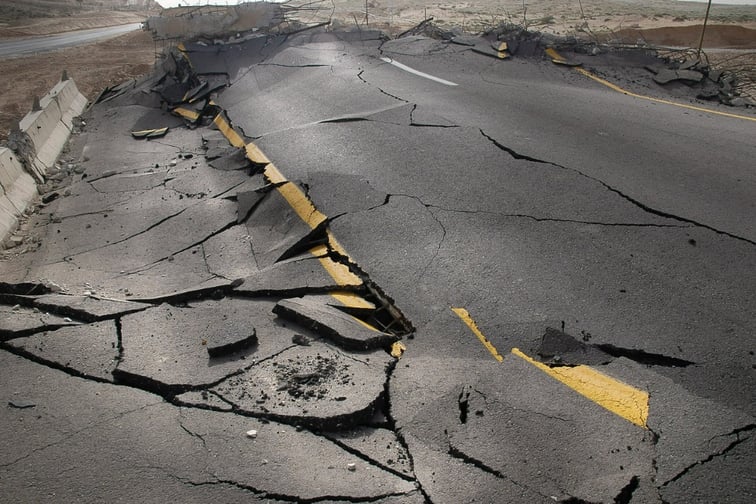

The Insurance Council of Australia (ICA) has revealed details about the impact of the earthquake in Victoria.
The 5.9 magnitude quake struck on Wednesday morning and was widely felt across Victoria and NSW. Geoscience Australia has confirmed that the earthquake’s epicentre was north of Rawson, about 350km east of Melbourne. Several smaller aftershocks have followed. There are no reported injuries but some serious damage to buildings in Melbourne.
“The earthquake is the largest event to have occurred within SE Australia in the modern instrumental era,” said a release from Geoscience Australia.
In response to questions from Insurance Business the ICA said that there were 1,700 earthquake claims so far but no estimated dollar value for the damages at this early stage. Nearly all the claims are from Victoria, but 4% are from the ACT and NSW.
The majority of the claims are for homes with minor damage like impacts to plaster and render, cracked walls and fallen masonry. The ICA said insurers have received a handful of claims for significant structural damage.
Initially, reports said Mansfield, rather than Rawson was the epicentre of the quake. When the earthquake struck, Mansfield residents said there was a noise like a loud crash followed by birds flying around wildly.
A local book shop owner told The Guardian newspaper that residents reacted like “it was the end of the world” and “everyone rushed out on to the main street.” However, the town’s mayor only found out about the earthquake from a journalist. There were no reports of damage.
According to news reports, the worst earthquake impacts were on Chapel Steet, in central Melbourne’s Windsor neighbourhood. Photos posted on Twitter show the collapsed upper storey of Betty’s Burger building with debris on the street below.
Other reports said several Melbourne skyscrapers and a city hospital were briefly evacuated and damaged tram lines were temporarily closed.
On Thursday, IAG, Australia’s biggest general insurance company, had received more than 400 claims.
CEO Nick Hawkins said IAG’s priority is the safety of its customers and people.
“Our dedicated Major Event team is in place all year round to ensure we’re as well prepared as possible to support our customers following a natural disaster,” he said.
A company media release noted that due to current COVID-19 restrictions it may take longer than usual for commercial customers to identify damage.
“We encourage our customers who have suffered damage to their homes or properties to contact us to lodge their claim, so we can provide immediate support such as emergency make-safe repairs and temporary accommodation, as quickly as possible,” said Hawkins.
Another big general insurer, Allianz, said it is actively monitoring the situation and is ready to help customers with claims as the recovery period starts.
In a release, the insurance giant advised customers directly impacted by the earthquake to prioritise safety and update friends and family.
Once the area is safe, the insurer recommended customers create an inventory of possessions and areas of the building that are damaged. It also recommended taking photos before disturbing the scene or removing debris.
The ICA said under the current COVID-19 restrictions, insurance assessors are considered authorised workers and are permitted to conduct damage assessments. Builders and tradies are also allowed to carry out urgent and essential repairs including property make safes.
Geoscience Australia said it received more than 40,000 felt reports in the 24 hours after the quake.
The agency said this area of Victoria in the South East Highlands region regularly experiences small earthquakes. There have been about 60 earthquakes of magnitude 2 and greater in the last 20 years.
“The earthquake epicentre lies just to the east of the Fiddlers Green Fault Zone suggesting that reactivation of a portion of this fault, at the base of this major crustal-scale fault structure, was the cause of the earthquake,” said the agency’s release.
The agency said Rapid Deployment Kits (RDKs) are being sent to the earthquake area to gather more data. These kits help scientists better define the source of the earthquake in terms of the location of the active fault and the depth of the main event.
The recordings from these kits could be very useful to the insurance industry. They provide rare strong ground motion recordings that can be used to improve hazard estimates and guide building design.
Aftershocks from the earthquake are expected to continue for months.
